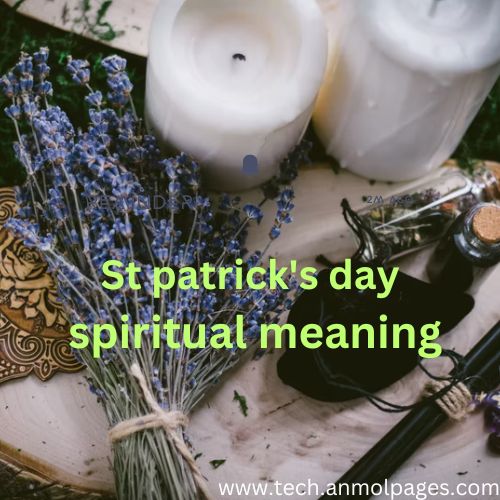Table of Contents
ToggleWho is St. Patrick
St patrick’s day spiritual meaning-St. Patrick, the patron saint of Ireland, is a central figure in Irish history and Christianity. Born in Britain, he was captured by Irish raiders and taken to Ireland as a slave. During his captivity, he found solace in his faith and, according to legend, received a divine calling to convert the Irish to Christianity. After escaping, he returned to his homeland, became a priest, and later returned to Ireland as a missionary.
St. Patrick is credited with using the shamrock to explain the Holy Trinity, often associated with snakes driving from the island, a metaphor for eradicating pagan practices. Celebrated on March 17, St. Patrick’s Day honors his contributions and has evolved into a global celebration of Irish culture and heritage.
You May Also Like:-Spiritual Awakening
St. patrick’s day spiritual meaning-
St. Patrick’s Day, celebrated on March 17th, honors St. Patrick, the patron saint of Ireland. Beyond the festivities and cultural celebrations, the day holds spiritual significance:
- Honoring St. Patrick: The day celebrates St. Patrick’s contributions to Christianity, particularly his role in bringing Christianity to Ireland. He is known for his missionary work, teaching the Irish about Christianity, and for his use of the shamrock to explain the Holy Trinity (Father, Son, and Holy Spirit).
- Reflection on Faith: St. Patrick’s Day offers an opportunity for reflection on one’s own faith journey and spiritual growth. It encourages believers to consider the lessons of humility, perseverance, and dedication exemplified by St. Patrick.
- Celebrating Conversion and Redemption: The story of St. Patrick includes his own journey of conversion and redemption. Born in Britain and captured by Irish pirates, he later escaped, returned to his homeland, and eventually came back to Ireland as a missionary. His life story symbolizes themes of forgiveness and the transformative power of faith.
- Unity and Community: The day also emphasizes unity and community, reflecting the broader Christian value of coming together in faith. It’s a time when people of Irish descent and others celebrate their shared heritage and faith, fostering a sense of belonging and communal spirit.
- Charitable Acts: Traditionally, St. Patrick’s Day has been a time for acts of charity and kindness. Many people engage in charitable activities or support those in need as a way to honor St. Patrick’s example of generosity and compassion.
In summary, while St. Patrick’s Day is widely known for its cultural and festive aspects, it also holds deep spiritual meaning related to faith, conversion, and community.
St. Patricks Cathedral
St. Patrick’s Cathedral in New York City is an iconic symbol of Catholicism and Irish heritage. With its stunning architecture and historical significance, the cathedral is a testament to the enduring impact of St. Patrick’s legacy. It serves as a place of worship, reflection, and cultural pride for locals and visitors.
What was St. Patrick’s relationship with god?
How did St. Patrick influence Christianity?
Facts about the St. Patrick’s
Patrick was a humble, pious, gentle man, whose love and total devotion to and trust in God should be a shining example to each of us. He feared nothing, not even death, so complete was his trust in God, and of the importance of his mission.
